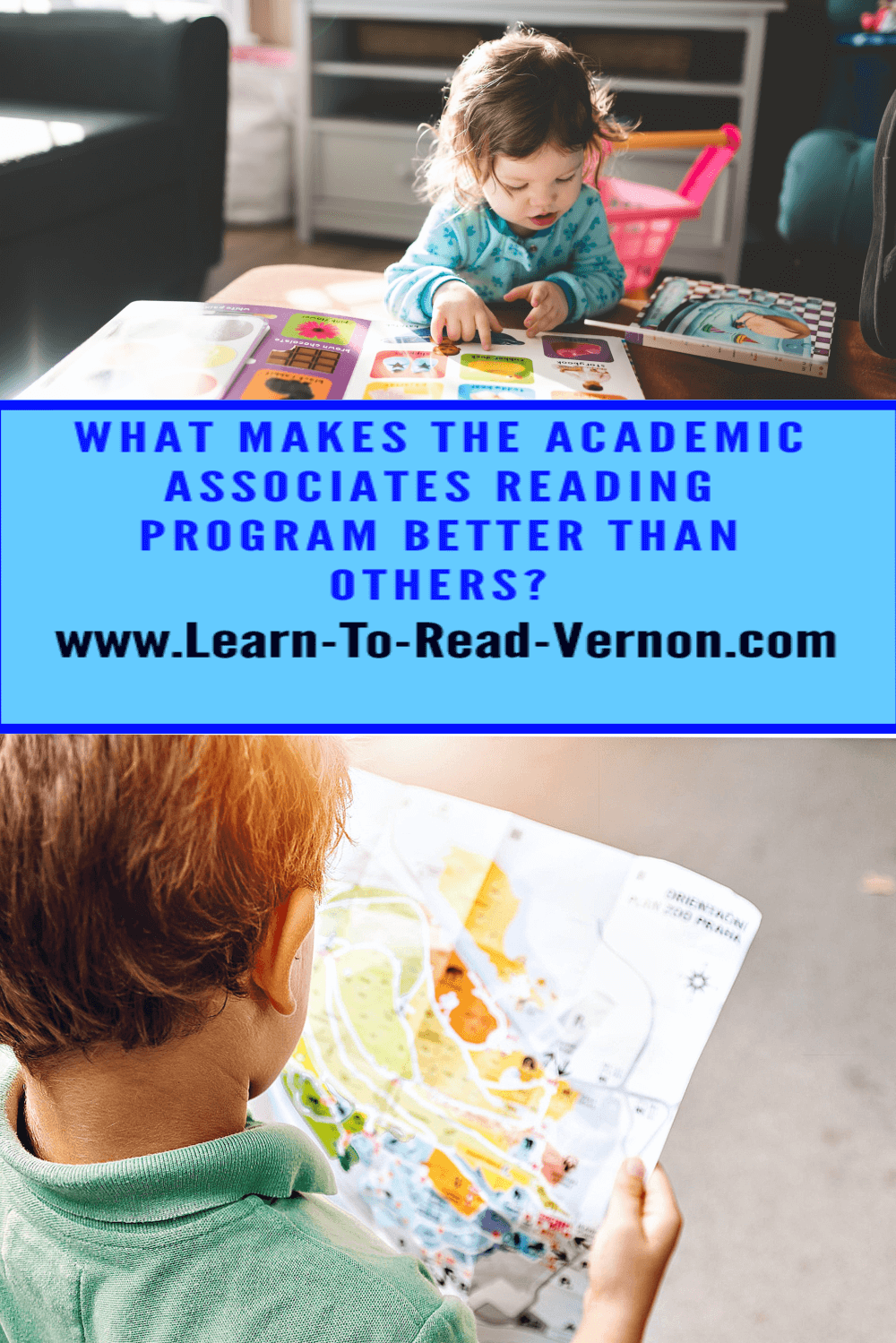| site search by freefind | advanced |
- Home
- Learn To Read
- Reading Instruction Methods
Why Are Academic Associate
Reading Instruction Methods Better Than Others?
Note: If you purchase anything from links on this site, I may make a commission.
Join our Facebook page.
There are many reading instruction methods on the market today. Each has its own way of doing things, with various levels of success. Some methods require students to come into a classroom, some are do-it-yourself teach-at-home courses, and others are free - often sponsored by the government. Each will help some students, but others will fail. Many incorporate phonics; however, phonics must be taught correctly if it is to help the vast majority of students. This is why our program succeeds even when others have failed. If a student knows their alphabet and can speak English, we can teach them the skill of reading.
With all the program choices available, why would a parent or student choose Academic Associates? Why spend your hard-earned money when there are free or inexpensive programs? What is it that sets Academic Associates reading instruction methods in a class by itself?
Academic Associates Founder Cliff Ponder
Explains The Uniqueness Of Our
Reading Instruction Methods:
Comprehensive reading instruction methods must begin with unlocking the coded symbols that stand for words. Unfortunately, most methods leave large gaps in this crucial step, so students can never move past Step One. A frequent and legitimate question is, “What’s the difference between the Academic Associates® method and other instructional methods? Aren’t they all the same?” We hesitate to present the following because it may make our method appear too complex and difficult. But even very young students can easily learn all of the rules and sounds below in small, logical, sequential steps. Our first-grade students learn everything on this page, and much more. Any good teacher can teach reading effectively once these concepts are placed in a usable format. Please don’t think these things will be difficult. They are easy for five year-olds and they will be far easier for you, the teacher.
Most phonics programs teach only one or two sounds for each letter. Our course also includes all those basic sounds. They are not listed below. The following elements are largely omitted from nearly every instructional course. You will know some of them, but there may be others whose existence you never even suspected. And until you see how they work, it’s difficult to imagine how extremely important they are in reading instruction methods. Our course doesn't stop with word-attack skills, but also teaches comprehension and fluency.
1. Our course typically requires only 30-60 hours to complete. In that time, students raise their grade-level to at least their school-age appropriate level. Other courses require as long as several years.
2. What are the nine sounds of A? Most phonics programs teach only two or three. All nine are essential.
3. What are the six sounds of E? Most phonics programs teach only two.
4. What are the five sounds of I? Most phonics programs teach only two.
5. What are the five sounds of O? Most phonics programs teach only two.
6. What are the five sounds of U? Most phonics programs teach only two.
7. What are the six sounds of Y? Most phonics programs teach only two or three.
8. What are the five sounds of IE and EI? Most phonics programs teach only two or three.
9. Why the old spelling rule, “I before e, except after c....” is inaccurate and misleading.
10. What rule dictates when Y will always copy the sound of long I?
11. What rule dictates when Y is always silent?
12. What rule dictates when Y will almost always ( 98% ) copy the sound of long E?
13. Why is the silent W in words such as low and glow?
14. Why is a silent D in words such as ledge and judge?
15. Why is a silent U necessary in words such as guess and guitar?
16. How many vowels can copy the sound of short U? And why is this so important?

17. When and why does the suffix ED make each of its three distinct sounds?
18. What rule determines when C will copy the sound of S and when it will copy the sound of K? This important rule affects about 250,000 words.
19. What rule determines when G will copy the sound of J and when it will make its own sound?
20. What rules determine when S will make its own sound and when it will copy the sound of another letter?
21. What are the six sounds of OO? Most phonics programs teach only one or two.
22. What are the 25 OUGH words? That’s all there are. But OUGH makes six common sounds.
23. What are the fourteen AUGH words? That’s all there are, and anyone can learn them in a few minutes.
24. What are the eleven ways to spell the sound of OO, as in boot?
25. What are the fourteen ways to spell the sound of shun, and why are they so important?
26. What are the six common ways to spell the sound of SH, and why is it crucial that students learn all of them?
27. What are all twelve sounds of EA? Most courses teach only two or three.
28. What is the secret vowel sound which precedes all the tions, tials, tious's, sions, ceans, cians, cions, etc.
Please remember that these sounds and rules are in addition to the basic sounds taught in other courses. Each of the above-mentioned sounds and rules is easily learned as we progress through the course. Our Rule Cards and Reading Lists, plus continuous review, assures that every student learns to read.
After considering all these factors, some will say, “I learned to read without knowing all that, and so did a lot of other people. Why should we be so concerned with them?” The answer is that the students who didn’t learn to read well will never learn to read well without knowing those things. Those things greatly simplify learning to read.
The reason so many students didn’t learn to read by the whole-word method, or typical “phonics” method is because of the differences in the way human brains process incoming data. Most males and many females process written data by a system that is largely incompatible with the whole-word method and many phonics reading instruction methods. The typical male—and many females—do not learn reading or much of anything else from inference. They must be told plainly and directly exactly which letters make which sounds under what circumstances. In an only partially facetious example, if you tell a male that a trash can is overflowing, he will assume you think the state of the trash can is an interesting topic of conversation, when you were actually hinting for him to empty the can. The reason males comprise most of the poor readers is that they were never told in concrete terms the rules for decoding words. Unfortunately, almost no one knows these simple rules any more—not even reading textbook publishers. But when students learn to read by a logical, sequential method that teaches them rules they can follow, and exceptions to some of the rules that also make sense, they quickly and painlessly learn to read. There is no significant difference in the reading abilities of males and females when taught by the Academic Associates® method. [copyright 1997 by Cliff Ponder, used with permission]
The above may sound complex, but with the simple step-by-step reading instruction methods of Academic Associates, even first-grade students can master reading quickly. Sign up for our complete reading program now. If you do not live in Vernon you may be interested in our reading instruction methods Internet program. Read the FAQ page or drop us an e-mail for more details. For pre-readers, see our alphabet reading instruction methods recommendations.



